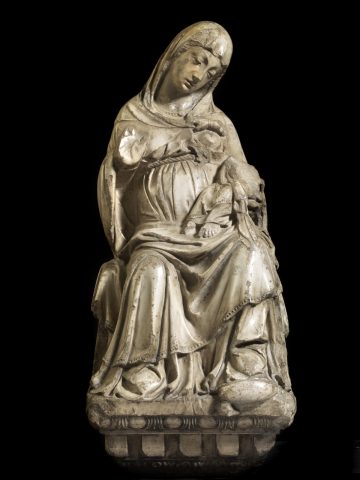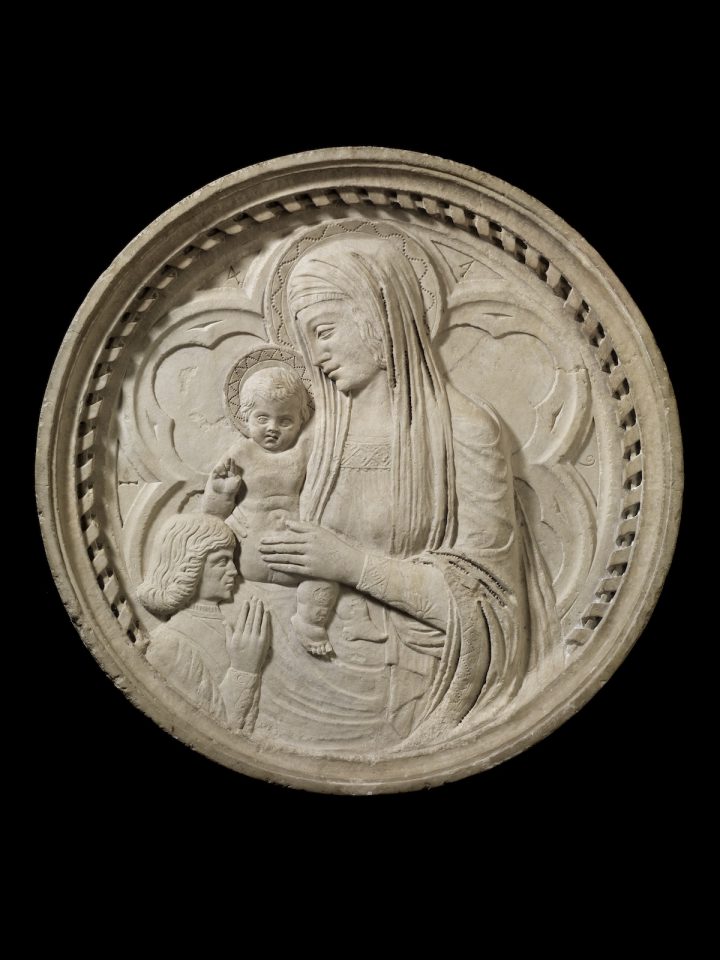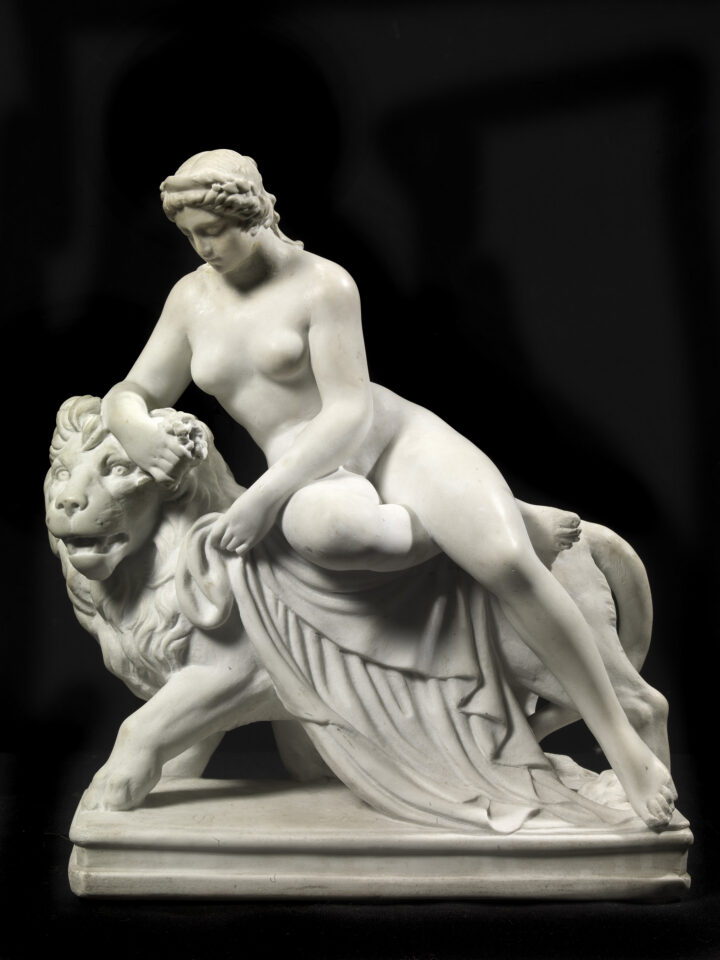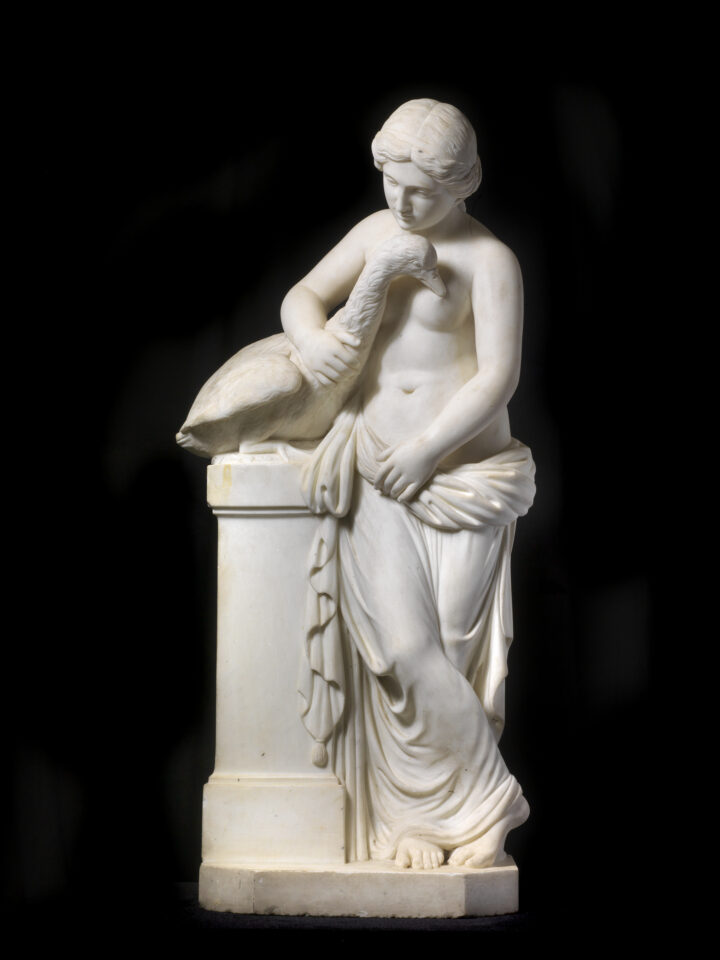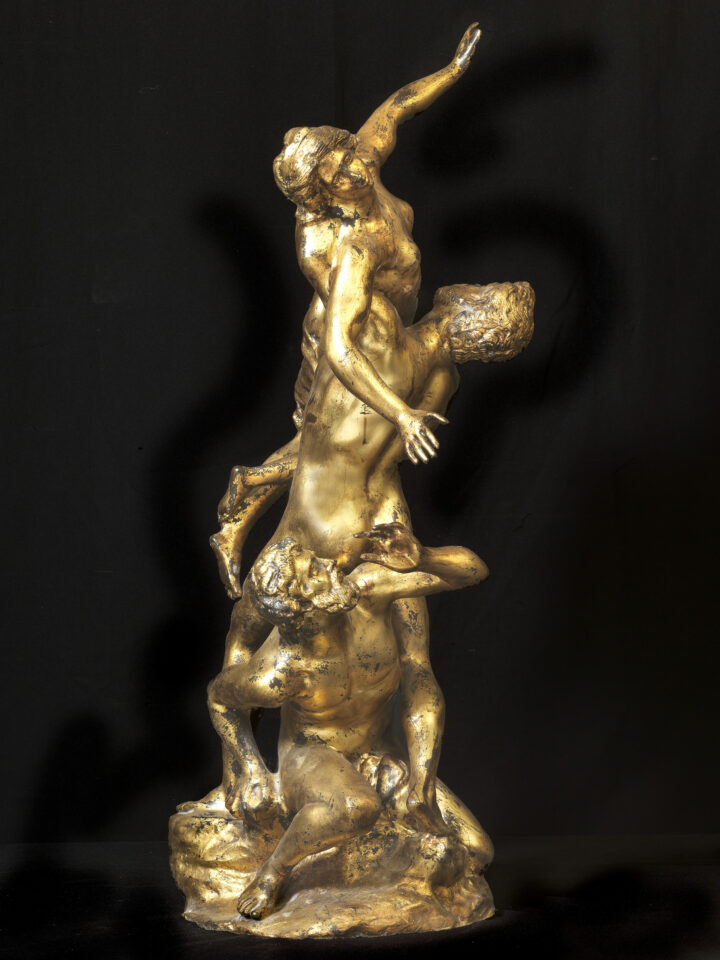ALCEO DOSSENA, attributed to
Cremona, 1878-Rome, 1937
Madonna with the Child
marble, cm 64 height
“I have created in the manner like those of the great maestros, but I have always created”. With these words, Alceo Dossena defended his incredible art when, in 1928, experts found out that some pieces, sold as ancient art in the United States, were actually modern art. In previous years, many of Dossena’s works – we do not know if they were made in good faith as he later claimed – were identified by the biggest names in the field of the art criticism not only as being ancient art, but also as masterpieces of great artists of the fourteenth and fifteenth century, and were bought by important museums.
Some were even attributed to Simone Martini, an artist known exclusively for his pictorial work, which means that, to justify the creation of such extraordinary pieces, they even went as far as to think that he must have been a sculptor too.
The art of Dossena, who we know spent part of his time studying in Tuscany, drew inspiration from the great maestro of Siena for his works, but he was able to merge his style with influences from other maestros, not necessarily of the same era. As a matter of fact, the sculpture in question seems to effectively combine Gothic shapes and stylism with more mature traits: in the languid expression of the Virgin, for example, there seems to be something that echoes Michelangelo’s Pietà, in Saint Peter’s Basilica.
The work was certainly made during the most ancient phase of the artist’s production. Notably, this poignant sculpture is closely related to Virgin in the Annunciation kept in the University Art Gallery of Pittsburgh, bought by Helen Clay Frick as a Simone Martini’s piece for the astronomical sum of 225,000 dollars at the Volpi antiquarian, in Florence. The two elements that are also found in the American piece are the face of the woman, although more in the style of Martini’s and more stylized in the first one, and the denticulated capital on which the figure of the sculpture stands. The evident cracks, likely part of the artistic process, might suggest that the work was among the ones that Fasoli and Pallesi, who discovered our talented sculptor, passed off for ancient pieces coming from a non-existent Gothic abbey that was ‘demolished’ during an earthquake in Mount Amiata, a gimmick contrived to justify the sudden appearance on the market of so many unknown masterpieces.
In the thirties, Dossena, finally free to sign his own works and to show himself to the public, found great success and popularity, culminating in the major auction held at the Plaza Hotel in New York in 1933.

